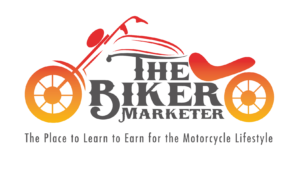
1. Understand Your Audience
Getting to Know Bikers
If there’s one thing I’ve learned in my years of promoting motorcycle gear, it’s that understanding the audience is crucial. Motorcyclists come from all walks of life and have different interests, preferences, and needs. So, take a moment to think about your target group. Are they long-distance riders, weekend warriors, or perhaps off-road adventurers? It makes a world of difference when you can tailor your content to resonate with them.
I like to hang out in biker forums and social media groups where bikers gather. You’ll find a treasure trove of information on what gear they’re talking about, what they love, and what they loathe. This insight will guide your promotions and make them feel personal rather than just sales pitches.
Moreover, don’t forget to consider the demographic factors—age, gender, and experience level can affect gear preferences. Knowing these details helps me align my recommendations with what your audience truly needs.
Engage with the Community
Building genuine relationships with your audience is key in any niche, but especially in motorcycle culture. Attend local biker events and meetups whenever possible. Trust me, networking in person has helped me foster connections that translate into trust and sales.
Engaging with your community online is just as impactful. Comment on posts in relevant groups, offer advice, and share your own experiences with motorcycle gear. This approach not only allows you to promote products but also establishes you as a reliable source of information, making people more inclined to trust your recommendations.
Being transparent about your affiliations also cultivates a positive perception. If people know you genuinely care about them, they’re more likely to engage and take your suggestions seriously.
Use Surveys and Polls
Another great method for understanding your audience is through surveys and polls. You can create an easy survey to find out what gear they value most, their concerns, and what they want to learn more about. Tools like Google Forms or SurveyMonkey work wonders for this.
By actively listening to what your audience wants, it tailors your content to fit their needs perfectly. Whether it’s questions about helmet safety ratings or preferences for riding jackets, I’ll structure my promotions around these responses. It speaks volumes when you show people you’ve heard them.
Finally, don’t hesitate to share the results! It creates a sense of community and involvement when you share insights back with your audience, reinforcing that their voices matter.
2. Choose the Right Products
Quality Over Quantity
When it comes to motorcycle gear, the choice of products can make or break your success as an affiliate marketer. Personally, I focus on quality over sheer volume. I can’t stress enough how important it is to promote products that I genuinely believe in. If you recommend lousy equipment, your credibility is going to take a hit.
I look for reputable brands known for their durability and safety. Whether it’s helmets, jackets, or tires, I always check reviews, comparisons, and user testimonials. If something is highly rated, it makes it easier for me to recommend it confidently. People appreciate good advice that helps them make better choices.
Additionally, I sometimes ask manufacturers for products to test and review. This process not only enhances my product knowledge but also allows me to share first-hand experiences with my audience.
Stay Updated on Trends
The motorcycle gear market is constantly changing—new product innovations surface all the time. Keeping an eye on trends can position you as an authority. I subscribe to industry newsletters and follow significant events like motorcycle expos to catch the latest gear.
Social media also showcases emerging products where enthusiasts buzz about the latest releases. Keep an eye on platforms like Instagram and TikTok, where influencers often rave about gear. It’s a great way to spot what’s hot in the community.
When a new product launches, I try to be one of the first to review it. It draws in traffic since people are eager to know more about fresh gear.
Utilize Multiple Affiliate Programs
Diversifying your product range is crucial. Relying on a single affiliate program can limit your options. By joining multiple programs, I can offer more choices to my audience. This way, whether they’re searching for entry-level or premium gear, I can cater to their distinct needs.
Remember to thoroughly read the terms of each affiliate program. I’ve learned the hard way that not every program aligns with my values or offers custom branding options. Opt for programs that support your marketing strategies.
Also, leverage crossover opportunities. If a bike manufacturer offers gear, I link to both bikes and the gear in my content. It enhances the user experience and increases potential sales.
3. Create High-Quality Content
Explain with Detail
High-quality content is the backbone of successful affiliate marketing. I dive deep into the specifications and features of the motorcycle gear I promote. Instead of just listing what a product looks like, I explain how it works and why it matters.
In-depth guides, how-tos, and reviews are great ways to provide real value. I remember writing a comprehensive guide on choosing a helmet, outlining types, safety standards, and how to ensure a proper fit. It ended up positioning me as a go-to source for first-time buyers!
Using visuals, like images and videos, adds depth. It not only helps in demonstrating products but also keeps readers engaged.
Optimize for SEO
Search engine optimization (SEO) is fundamental in attracting traffic to your content. I focus on keyword research to understand what terms potential buyers are searching for. Using tools like Google Keyword Planner helps in locating relevant keywords that resonate with biking enthusiasts.
Also, don’t forget about meta descriptions and alt texts. They might seem trivial, but they help search engines understand your content. I add these elements wisely to boost visibility.
Incorporating internal and external links also improves SEO and reader experience. When I mention a specific product, linking it to a reputable review site or even a manufacturer’s page builds credibility.
Engage on Social Media
Social platforms are invaluable for promoting your content. I share snippets of my articles and eye-catching images that entice followers to click through to my site. Engaging posts can lead to increased traffic and, subsequently, more conversions.
Creating themed posts around popular biking events, gear reviews, or tips helps in retaining interest. Live sessions, where I answer questions or showcase gear, create an interactive space that fosters community.
Another approach I utilize is running contests related to biker gear, directing traffic to my affiliate links through special offers. The excitement from giveaways helps convert casual followers into loyal fans.
4. Leverage Email Marketing
Build a Targeted Email List
One of the best investments I made was building a targeted email list. Email marketing can yield impressive results when done right. I encourage visitors on my site to sign up for my newsletter by offering exclusive content or discounts on gear. It’s all about providing value!
Once you’ve got a list, segment it based on preferences. I separate subscribers into groups based on the types of gear they’ve shown interest in—like touring gear enthusiasts versus those who lean towards sports bikes. This way, I can tailor my emails to their specific wants.
Regularly updating my subscribers keeps them engaged. I like to share tips, reviews, and special affiliate promotions. This consistent communication maintains interest and loyalty, leading to higher conversion rates.
Create Engaging Email Campaigns
Writing compelling emails requires some creativity! I aim to craft narratives that blend personal experiences with product recommendations. A story about a fantastic ride often provides the perfect segue into suggesting specific gear I used on that trip.
I also consider the timing of sending out emails. Keeping an eye on statistics reveals when my audience most engages. I’ve noticed that emailing on weekdays typically brings in more response than weekends.
Don’t forget to add clear calls to action. Whether it’s a “Shop Now” button or a “Read More” link, guiding recipients towards taking that action is crucial for conversions.
Monitor Performance
Lastly, monitoring your email campaigns is vital. I’ll track my open rates, click-through rates, and conversions. Tools like Mailchimp or Constant Contact have analytics features that simplify this task.
Through this analysis, I can evaluate what content resonates most with my audience. If gear reviews generate more clicks than generic promotions, it’s a sign that I should adjust my strategy. It’s all about adapting and improving over time.
5. Analyze and Adjust Your Strategies
Track Your Affiliate Links
Keeping tabs on your traffic is a game changer. I use link management tools to track my affiliate links’ performance. Knowing which products get the most clicks helps me understand where to focus my efforts.
Analytics not only shows what gear is popular, but it also reveals trends over time. Maybe there’s a spike in interest in touring gear during summer months—working that into my content calendar allows me to stay ahead.
Being proactive in monitoring clicks means I can adjust quickly. If one product suddenly tanks, I can figure out why and decide whether to redirect my focus elsewhere.
Seek Feedback
Don’t shy away from seeking feedback from your audience. I occasionally run polls asking my readers what they’d like to see more of, or what gear they found useful. Their opinions matter and can lead to stronger affiliate strategies.
I also keep an open mind. If readers express frustration or discontent with a specific product I’ve promoted, I take note. It’s an opportunity for me to refine my recommendations and focus on products that better serve customer needs.
Even diving into reviews or comments on your platforms can provide insights. Engaging with comments encourages dialogue and reveals trends or queries that may not have been brought up initially.
Continuous Learning
The world of affiliate marketing, especially within niche sectors like motorcycle gear, is ever-evolving. I’m a firm believer in continuous learning. I keep up with popular blogs, forums, webinars, and conferences dedicated to affiliate marketing in the biker community.
There’s always something new to learn, and integrating new strategies can offer fresh perspectives. Keeping your skills sharp ensures you remain relevant and effective in your promotional efforts.
Industry shifts can greatly impact your marketing strategies; embrace that change and adapt!
Frequently Asked Questions
1. What is affiliate marketing?
Affiliate marketing is a performance-based business model where you promote other companies’ products and earn a commission for each sale made through your referral links.
2. How do I choose the best motorcycle gear to promote?
Focus on quality, reputation, and reviews of products. Understand your audience’s needs and preferences and promote gear that aligns with their interests.
3. Can I promote multiple affiliate programs at once?
Absolutely! Joining multiple affiliate programs allows you to offer a wider variety of products to your audience, increasing your chances of making sales.
4. How important is content creation for affiliate marketing?
Creating high-quality content is crucial. It engages your audience, educates potential customers, and positions you as an authority in the motorcycle gear niche.
5. What are some effective ways to grow my email list?
Offer exclusive content, discounts, or valuable resources in exchange for email sign-ups. Additionally, ensure you promote your newsletter through all your channels consistently.

